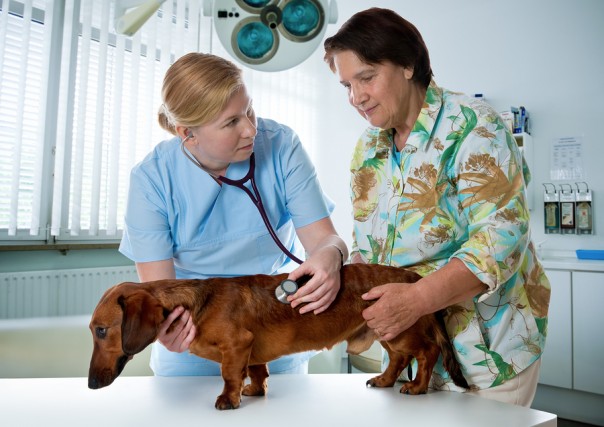By Peter Weinstein DVM, MBA
 Post offices, banks, doctor’s offices, motor vehicle departments, restaurants, veterinary clinics… They all have a similar reputation—they never seem to run on time.
Post offices, banks, doctor’s offices, motor vehicle departments, restaurants, veterinary clinics… They all have a similar reputation—they never seem to run on time.
Does your practice belong on the above list? If so, do any of these situations sound familiar?
- The first client arrived late and things just snowballed from there
- The client was such a Chatty Cathy that we couldn’t get her into or out of the room
- The cat was sooooo fractious that it took a while for us to get our hands on it
- That last patient was much sicker than we thought.
And where are you in this mix? Is lateness ever the doctor’s fault. Do any of these phrases ever describe you?
- On the phone instead of in the exam room
- On the internet instead of in the exam room
- Distracted, disorganized, and unfocused while in the exam room
- Never in a rush, because you know people will wait for you.
If you want to claim that you are a client-centered practice, you need to change your approach to client waiting. It is disrespectful and just bad client service to keep people waiting. On the other hand, if you want to continue in the old model of a doctor-centered practice … take your time!
[tweetthis]If you are a client-centered practice, change your approach to client waiting. [/tweetthis]
Instead, what if you guaranteed your clients that if they arrive on time, they will be seen within ten minutes of their appointed time OR the appointment is FREE!!
Now, your first reaction is likely, “I can’t do that, I’ll be giving away FREE EXAMS all day!” But keep in mind, you are probably already doing that due to appointments that last longer than they should. If you DID make this promise to your clients, though, wouldn’t it differentiate you from other practices in your area? Think about it this way: “If I’m on time every time, then maybe I’ll be done on time at the end of the day, too!” Wouldn’t that be nice?
So, let’s see how we could accomplish this.
First, make being “On Time, Every Time” a goal for the entire practice team.
Second, take a month to identify WHY your practice runs behind. For each appointment over the next month, note when the client is late arriving, the time the client gets into the exam room, the time that the veterinary nurse or doctor enters the room, the time the doctor leaves the room, and, if the doctor is late leaving the room, note the reason why.
After you have completed a month or more assessment of your exam room operations, determine the most frequent causes for why you fall behind. What percentage were client caused? Staff caused? Doctor caused?
For those things that you can control—staff and doctor—what changes are needed to get the team to stay on time? For the things you can’t control—clients or pets—what can you do?
 Armed with your research and your ideas, make the necessary changes in your practice workflow to keep the doctor and staff on time. For example, it might be as simple as cutting out phone calls and Facebook time between appointments, or developing a system to let the doctor know that time is up. With your changes implemented, repeat the tracking for another month. Were you on time more often this month? Did you go from 60% late appointments to 30% late? Of the 30%, were they doctor/staff or client/patient caused?
Armed with your research and your ideas, make the necessary changes in your practice workflow to keep the doctor and staff on time. For example, it might be as simple as cutting out phone calls and Facebook time between appointments, or developing a system to let the doctor know that time is up. With your changes implemented, repeat the tracking for another month. Were you on time more often this month? Did you go from 60% late appointments to 30% late? Of the 30%, were they doctor/staff or client/patient caused?
Once you have implemented enough changes so that 85% to 90% of your appointments are on time, issue the challenge to your staff to be an “On Time, Every Time Practice” and make this promise to your clients. Reward your staff for staying on time, and promote the heck out of your promise to the world at large. Tell clients they can leave War and Peace or Harry Potter at home when they come to see you, because you will be seeing them on time, every time or their visit is FREE.
If this seems simple, that’s because it is! The more significant aspect of this change is to challenge the veterinary profession to repair one aspect of its image that can be controlled – late appointments.
Being on time shows respect for the client, sends a message to the staff, and is good for business.
Stop making excuses. Start making changes.
[tweetthis]Being on time shows respect for the client. We need to change our approach.[/tweetthis]
 Dr Peter Weinstein sees himself as a cheerleader and advocate for the veterinary profession. From his current job as Executive Director of the SCVMA to his speaking and writing, he likes to help veterinarians and their teams enjoy what they do everyday. Feel free to reach out to him at peterw2@aol.com
Dr Peter Weinstein sees himself as a cheerleader and advocate for the veterinary profession. From his current job as Executive Director of the SCVMA to his speaking and writing, he likes to help veterinarians and their teams enjoy what they do everyday. Feel free to reach out to him at peterw2@aol.com